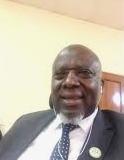Knowledge, Prevalence and Pattern of Sexual Violence among Students in Lagos State Primary Schools
DOI:
https://doi.org/10.53449/ije.v4i2.68Keywords:
knowledge, prevalence, pattern, child sexual violence, primary schoolAbstract
This study is a report of the understanding of primary school pupils of the prevalence and forms of sexual violence in Lagos state, Nigeria. The sample for the study consisted of 400 pupils, 188 males and 212 females, aged 6 -12 years, randomly selected from 16 rural/urban primary schools in Lagos State. Knowledge Prevalence and Pattern of Sexual Violence Questionnaire (KPSVQ) was used for data collection. Four research questions guided the study to examine the differences, knowledge, prevalence, pattern, and experience of pupils on sexual violence across age, sex, school type and setting. Results show that pupils in primary schools are well informed of sexual violence and its form; verbal, physical, non-verbal and quid pro quo. Majority of the respondents (79.5%) affirmed that girls are major victims and their major source of information is the media. Strangers (60.1%), were identified as major perpetrators and willingness to report had a significantly high percentage (59.3%). Significant difference exists in sex and setting on knowledge of child abuse (t (398) = 2.21, p = .03 & 4.68, p = .00 < 0.05) but no age difference (t (398) = .55, p = .59 > 0.05) and no difference was found across sex, age and setting on the experience of child abuse (t (398) =.63, p = .53 > 0.05). No significant difference was also found between setting and reporting (t (398) = 1.63, p = .10 > 0.05). Based on the findings, it was recommended that the community must rise up to the zero-tolerance policy for all forms of sexual violence, government should ensure the enforcement of all laws on sexual violence particularly that of treating sexual violence as a criminal offence. Since the media is the major source of information, the media should be used for the education and public enlightenment programmes on sexuality education, preventive/defensive strategies, the government must ensure improved power supply to facilitate coverage and every individual must be willing to provide a safe and caring environment for every child.
Downloads
References
Abeid, M., Muganyizi, P., Massawe, S., Mpembeni, R., Darj, E., & Axemo, P. (2015). Knowledge and attitude towards rape and child sexual abuse a community based cross sectional study in rural Tanzania. BMC Public Health. 28(15), 428. https://doi.org/10.1186/s12889-015-1757-7
Aderinto, A.A. (2010), “Sexual abuse of the Girl-child in urban Nigeria and the implications for the transmission of HIV/AID”. Gender and Development, 5(2), 41-46. DOI: 10.4314/gab.v8i1.54690
Agbo, M. C. (2019). Child rape in Nigeria, implications on the education of the child. Children and Teenagers. 2(1), 13-31. DOI: 10.22158/ct.v2n1p13
Akinade, E. A., Adewuyi, T. D. O. & Sulaiman, A. A. (2010). Socio-legal Factors that Influence the Perpetuation of Rape in Nigeria. Procedia- Social & Behaviour Science, 5, 1760-1764.
Akin-Odanye, E. O. (2018). Prevalence and management of child sexual abuse cases presented at Nigerian hospitals: A systematic review. Journal of Health Social Science, 3(2), 109-124. DOI: 10.19204/2018/prvl2
Ambrose, K. U. (2018). Deviant behaviours in public school in Nigeria: Implication for Counselling. Issues in Professional Counselling (IPC)-APROCON
Aruna, J. O. (2018). Trends in child sexual molestation, Rape and incest: A view from south west Nigeria. Humanities and social sciences letters. 6(4), 137-148. DOI: 10.18488/journal.73.2018.64.137.148
Barth, J., Bermetz, L., Heim, E., Trelle, S., & Tonia, T. (2013). The Current Prevalence of Child Sexual Abuse Worldwide: A Systematic Review and Meta-Analysis. International Journal of Public Health, 58, 469-483. DOI: 10.1007/s00038-012-0426-1
Boney-McCoy S, Finkelhor D. P. (1995). Victimization: a risk factor for child sexual abuse and for PTSD-related symptomatology among sexually abused youth. Child Abuse Negl, 19, 1401-21
Cece Yara foundation (2020). Help to stop child sexual abuse in Nigeria. https://www.globalgiving.org/projects/stop-child-sexual-abuse-in-nigeria/reports/
Chapko M. K., Somsé P, Kimball, A. M., Hawkins, R. V., Massanga, M. (1999). Predictors of rape in the Central African Republic. Health Care Women International, 20, 71-9. DOI: 10.1080/073993399245971
Chinawa, J. M., Ibekwe, R. C., Ibekwe, M. U., Obi, E., Mouneke, V. U., Obu, D. C., Eke, B. C. (2013). Prevalence and pattern of sexual abuse among children attending Ebonyi State University Teaching Hospital, Abakiliki, Ebonyi State. Niger Journal of Paediatrics, 40(3), 227 – 231.
Community Advocate for Family & Youth, (2021). Who are the perpetrators of child sexual abuse? https://www.cafyonline.org/get-help/survivor-resources/survivor-resources-parents-victims/perpetrators-child-sexual-abuse/
Daral, S., Khokhar, A., & Pradhan, S. (2016). Prevalence and determinants of child maltreatment among school-going adolescent girls in a semi-urban area of Delhi, India. Journal of Tropical Pediatrics, 62, 227-240.
David, N., Ezechi, O., Wapmuk, A., Gbajabiamila, T., Ohihoin, A., Herbertson, E., & Odeyemi, K. (2018). Child Sexual Abuse and Disclosure in South Western Nigeria: A Community Based Study. African Health Sciences, 18, 199-208.
Denga, D.I. & Denga Hannah. 2004. Sexual harassment: A student’s view from a Nigerian University. The African Symposium, 4(1).
Drake B, Pandey S. (1996). Understanding the relationship between neighbourhood poverty and specific types of child maltreatment. Child Abuse Negl, 20, 1003-18.
Eke, G.K., Ofori, P.I. & Tabansi, P.N. (2011), “Perception of Rape amongst Secondary School Students in Port-Harcourt” The Nigerian Health Journal 11(1), 23 – 26
Ekine, A. (2020). Gender based violence in primary schools, Nigeria. Echidna Global Scholars Series.
Envuladu, E., Umaru, R. J., Banwat, M., & Lar L. (2013). Sexual abuse among female secondary school students in Jos, North central Nigeria. Journal of Medicine in the Topics. 15(1), 9-12.
Fernando, A. D., & Karunasekera, W. (2009). Juvenile victimisation in a group of young Sri Lankan adults. Ceylon Medical Journal, 54, 80-84. https://doi.org/10.4038/cmj.v54i3.1200
Gracia-Moreno, C., & Stockl, H. (2017). Violence against women. International Encyclopedia of Public Health.
Harrison, A. (2013). National Society for the Prevention of Cruelty to Children: warns parents of child abuse. BBC News https://www.bbc.com/news/education-23202242
Idoko, C. A., Nwobodo, E. D., Idoko, C. I. (2020), Trends in rape cases in a Nigerian state African Health Sciences, 20(2), 668-675. DOI: 10.4314/ahs.v20i2.17
Kann, L., McManus, T., Harris, W.A., Shanklin, S.L., Flint, K.H., Hawkins, J., Queen, B., Lowry, R., Olsen, E.O., Chyen, D., Whittle, L., Thornton, J., Lim, C., Yamakawa, Y., Brener, N., & Zaza, S. (2016). Youth risk behaviour surveillance, United State, 2015. MMWR Surveill Summ. 65(6), 1-174.
Martin, E. K., & Silverstone, P. H. (2013). How Much Child Sexual Abuse Is “Below the Surface,” and Can We Help Adults Identify It Early? Front Psychiatry, 4, 58. https://doi.org/10.3389/fpsyt.2013.00058
National Children's Advocacy Center, (2018). Child Sexual Abuse: Perpetrators – manipulation- disclosure - prevention. https://calio.org/images/FINAL-CSA-Perpertrator-with-References.pdf
Nlewem, C., & Amodu, O. K. (2016). Knowledge and Perception on Sexual Abuse amongst Female Secondary School Students in Abia State Nigeria. Research on Humanities and Social Sciences. 6(17), 74-84.
Olusanya, O., Ogbemi, S., Unuigbe, J., Oronsaye, A. (1986). The pattern of rape in Benin city, Nigeria. Trop Geog Med, 38(3), 215–220.
Okoro, F.I., & Osawemen, O. (2005). Sexual harassment: the experience of out-of-school teenagers in Benin City, Nigeria. African Journal of Reproductive Health, 9(3): 118-127.
Oyekola, I. A. & Agunbiade, O. M. (2018). Teacher-parents’ involvement in the prevention and management of child sexual abuse amongst in-school adolescents in Osun state. Ife PsychologIA. 26(2), 129-137.
Selengia, V. Thuy, N. H. T., Mushi, D. (2020). Prevalence and Patterns of Child Sexual Abuse in Selected Countries of Asia and Africa: A Review of Literature. Open Journal of Social Sciences, 8, 146-160.
Sulaiman, A. A (2021). Preventive counselling intervention: Improving the wellbeing of all. 78th Inaugural Lecture Series of the Lagos State University, Lagos: LASU Printing Press.
Sulaiman, A. A (2020). Sexuality education and couples guidance (3rd ed.). Lagos, Nigeria: Atlantic Press.
Sulaiman, A. A. (2015). Exploring the pattern of sexual harassment in Lagos state higher institutions: A structural model. Malaysian Journal of Education, 40(1), 13-19. DOI: 10.17576/JPEN-2015-4001-03
United Nations Children’ Fund (2007). Assessment of violence against children at the basic education in Nigeria. Abuja: Federal Ministry of Education.
World health organization (2013). Guidelines for medico-legal care for victims of sexual violence. Geneva: World Health Organization.
World health organization (2021). Violence against women retrieved 21st march 2021 https://www.who.int/news-room/fact-sheets/detail/violence-against-women.








